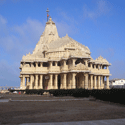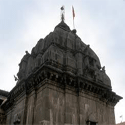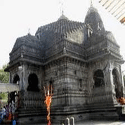Pashupatinath Temple, in Nepal’s capital city Kathmandu, is an important pilgrim site for Hindus all over the world. This temple has a rich history and has been one of the main centers of cultural exchange between India and Nepal for centuries. The temple is situated on the Gaurighat banks of the River Bagmati.
History
There are many stories regarding the form of Deity Shiva that is worshiped in Pashupatinath. One of the more popular ones is that Deity Shiva (in the form of an antelope) lived in the forests near the river Bagmati for some time. When the distressed Deities and people began plead for His return, Shiva decided to stay in the place in the form of Pashupatinath. People firmly believe that vision of Pashupatinath and a dip in the nearby Holy river Bagmati lead one to Salvation.
Adi Shankaracharya was instrumental in setting up a unique program of exchange of knowledge and culture through the Pashupatinath temple. Adi Shankaracharya had priests from Karnataka (known as Bhat-Brahmins) brought to Nepal to perform the daily worship in the Pashupatinath temple. This is similar to the traditions followed in the Kedarnath and Doleswor temples too.
The present structure was built around 300 years ago after the previous wooden structure fell prey to termites.

 Doleswor Mahadev Temple
Doleswor Mahadev Temple Somnath
Somnath Parli Vaijnath
Parli Vaijnath Shri Tryambakeshwar of Kakanwada
Shri Tryambakeshwar of Kakanwada Grishneshwar
Grishneshwar Bhimashankar
Bhimashankar